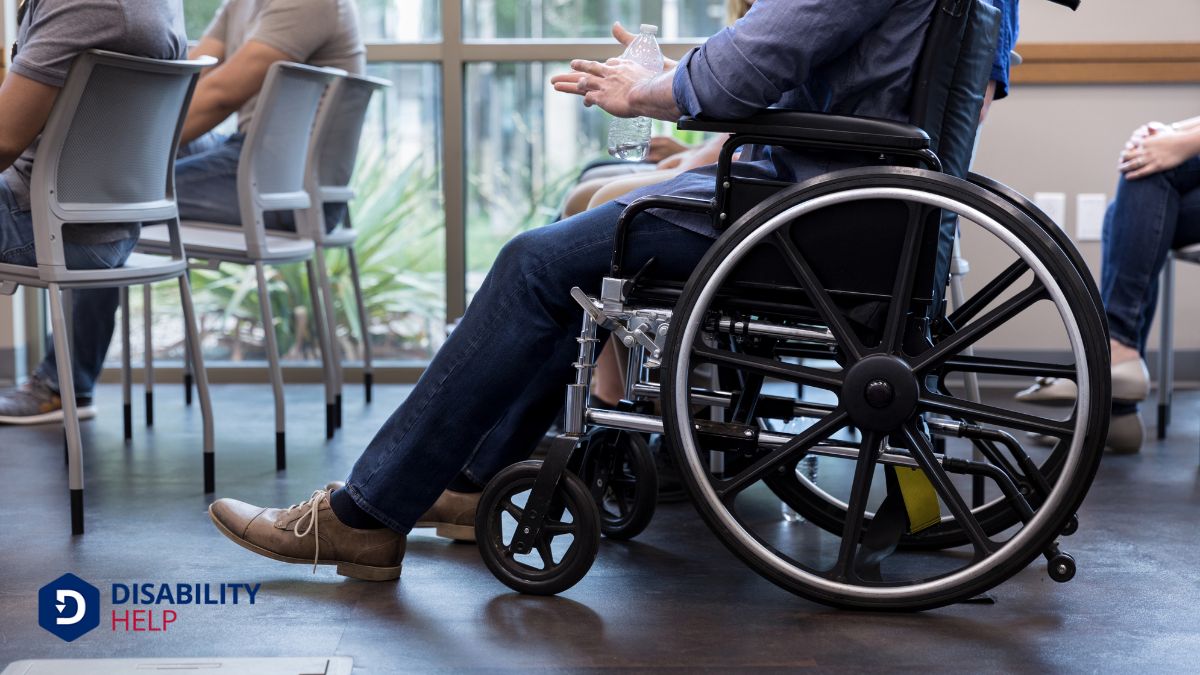Reaching a 100% VA disability rating isn't straightforward, and it's usually a demanding process. We need to provide thorough documentation illustrating clearly how our disabilities impact daily life. It could be based on either a single severe condition or a combination of them, with common conditions like PTSD or COPD potentially qualifying. We'll need complete medical records, a nexus letter, and supportive statements to strengthen our case. The VA application process itself requires diligence and attention to detail. Challenges and evaluations can make this journey tough, but understanding the steps involved can help illuminate the path forward.
Key Takeaways
- Achieving a 100% VA disability rating involves navigating complex criteria and detailed documentation requirements.
- Many veterans face challenges due to subjective evaluations and intricate regulations.
- A 100% rating often results from severe disabilities impacting daily life significantly.
- Detailed medical records and strong evidence connecting disabilities to military service are crucial.
- Persistence and understanding of the VA system are necessary for a successful claim.
Understanding VA Disability Ratings

Deciphering VA disability ratings can feel like solving a complex puzzle. It can be challenging to navigate the intricacies of the VA system. The ratings are crafted to measure the seriousness of disabilities resulting from military service, but they can often appear like a labyrinth of numbers and percentages. Each condition you have is given a rating from 0% to 100% based on how much it hinders your ability to work and carry out daily activities.
When approaching these ratings, it's important to grasp that the VA combines them in a unique way, not simply by adding them together. Instead, they utilize a method known as the "whole person" approach. This means the VA sees you as a complete individual who isn't more than 100% disabled.
For example, if you have two distinct disabilities rated at 50% each, they don't add up to 100% together. Instead, they calculate them by taking the initial percentage and then applying the second percentage to the remaining "non-disabled" part.
Navigating VA disability ratings demands patience and attention to detail, but understanding these fundamentals can make the process more manageable for all of us.
Criteria for 100% Rating
Achieving a 100% VA disability rating can seem like a challenging task, but knowing the criteria can make it more attainable. To qualify for this rating, we need to understand that it's based on our service-connected disabilities, which must be severe enough to prevent us from maintaining gainful employmentWork that provides a living wage and is within the capacity of an individual, including those with d.... The VA uses a schedule of ratings that considers both the nature and severity of our conditions, evaluating how they impact our daily lives and overall ability to work.
It's important to remember that a 100% rating may come from a single disability rated at 100%, or it can be a combination of multiple disabilities. When multiple conditions are involved, the VA uses a combined ratings table to determine the overall percentage. This means we can't just add up percentages; instead, the VA considers the cumulative impact on our health.
Additionally, we might qualify for a 100% rating through Total Disability Individual Unemployability (TDIU) if our service-connected disabilities don't meet the 100% criteria but still prevent us from working.
Common Medical Conditions
With a grasp of the criteria for a 100% VA disability rating, we can now explore the common medical conditions that often qualify veterans for such ratings. Understanding these conditions helps us better navigate the complexities of the VA system.
Severe mental health disorders, such as post-traumatic stress disorder (PTSD)A mental health condition triggered by experiencing or witnessing a traumatic event. and major depressive disorder, frequently lead to a 100% rating when they result in total social and occupational impairmentA loss or abnormality of a body structure or function, whether physical, mental, or sensory, often a.... These conditions can severely impact daily life, making it challenging for veterans to function effectively.
In addition to mental health disorders, certain physical conditions are prevalent among veterans. Severe respiratory illnesses like chronic obstructive pulmonary disease (COPD) or debilitating heart conditions may also warrant full disability. When these conditions limit a veteran's ability to engage in most activities, they may qualify for the highest rating.
Additionally, some veterans face complications from traumatic brain injuries (TBI), which can lead to significant cognitive and physical challenges. In such cases, if the symptoms are severe enough, a 100% rating might be applicable.
Required Documentation
For veterans aiming to secure a 100% VA disability rating, gathering the right documentation is important. We grasp how overwhelming the process can feel, but having a well-organized collection of documents can make a significant difference in our claim's success.
First, we need to make sure that we've our complete medical records, including any treatments related to our conditions. These records serve as proof of our disabilities and their connection to our military service.
Next, let's focus on obtaining a nexus letter. This document is a medical professional's written statement that connects our current disability directly to our service. It's a vital piece of evidence that strengthens our claim.
We should also gather personal statements detailing how our disabilities affect our daily lives. These statements add a personal touch to our application, offering insight into the impact of our conditions.
Lastly, if we've any buddy statements from fellow service members or family, they can further validate our claims. These accounts can provide additional perspectives and support our case. By making sure we've all necessary documentation, we're setting ourselves up for the best chance at achieving a favorable outcome.
The VA Application Process

Having organized our documentation, we're ready to tackle the VA application process. This stage is pivotal, as it sets the foundation for our claim. Let's break it down into manageable steps, ensuring clarity and progression.
- Complete the Application: We start by filling out VA Form 21-526EZ, which is the application for disability compensation. It's essential we provide accurate information about our service history and current medical conditions.
- Submit Supporting Documents: Along with the application, we need to include all relevant medical records, service treatment records, and any other evidence that supports our claim. This documentation strengthens our case by providing a clear link between our military service and the disabilities we're claiming.
- Track the Application Status: After submission, we can monitor the status of our application through the VA's eBenefits portal. Keeping an eye on our application's progress allows us to respond promptly to any additional requests for information.
Throughout the process, staying organized and proactive is vital. By understanding each step and preparing accordingly, we're better equipped to navigate the complexities of the VA application process and move closer to achieving the disability rating we seek.
Navigating VA Examinations
When we're preparing for VA medical exams, it's important to gather all necessary documentation and understand what to expect during the process. Familiarizing ourselves with the VA's rating criteria can help us better articulate our symptoms and conditions. By doing so, we make sure that our examinations accurately reflect the severity of our disabilities.
Preparing for Medical Exams
Exploring the intricate world of VA examinations can feel overwhelming, but with proper preparation, we can approach the process with confidence. Preparing for these medical exams is essential, as they play a significant role in determining our VA disability rating. Let's focus on a few key steps to make sure we're ready.
- Gather Documentation: Before our exam, it's important to collect all relevant medical records and documentation. This includes any private medical notes, prior VA examination reports, and evidence that supports our claims. Having these documents on hand helps ensure we provide the most precise picture of our situation.
- Understand Our Conditions: We need to be well-informed about the conditions we're claiming. This means knowing the symptoms, treatments we've undergone, and how these conditions impact our daily lives. Being clear and specific during the examination can help the examiner understand our unique circumstances.
- Prepare Mentally and Physically: The examination can be a stressful experience, so it's crucial to prepare mentally. Getting a good night's sleep, staying calm, and arriving early can make a significant difference in our ability to communicate effectively with the examiner.
Understanding Rating Criteria
To successfully explore VA examinations, we must grasp the intricacies of the rating criteria that determine our disability benefitsFinancial assistance provided to individuals who are unable to work due to a disability, such as Soc.... These criteria are designed to evaluate the severity of our conditions and how they impact our daily lives. Understanding this system helps us present our case accurately during examinations and guarantees we receive the benefits we deserve.
The VA uses a schedule of ratings—essentially a guidebook that assigns percentages to various disabilities based on their severity. Each condition is evaluated on how much it impairs our ability to work and function normally. It's essential we familiarize ourselves with the specific criteria related to our disabilities. This knowledge allows us to prepare adequately, ensuring we effectively communicate our symptoms and limitations during the examination.
Let's also remember that examiners consider the frequency, duration, and severity of our symptoms. We should provide detailed accounts, including how our conditions affect our daily routines and activities. By being thorough and precise, we enhance our chances of receiving an accurate rating.
Exploring these examinations can seem challenging, but with a clear understanding of the rating criteria, we're better equipped to advocate for ourselves and our deserved benefits.
Challenges in Approval
Securing a 100% VA disability rating is notoriously challenging due to the strict evaluation process and intricate criteria involved. We often find ourselves navigating a maze of regulations and documentation. The VA requires detailed medical evidence, consistent treatment records, and a clear demonstration of how disabilities affect daily life. To help understand these hurdles, let's consider three key challenges:
- Detailed Documentation: The VA demands thorough medical documentation that clearly links military service to the disability. Gathering this can be overwhelming, especially if our records are incomplete or scattered.
- Rigorous Medical Evaluations: The VA conducts its own evaluations, which can sometimes differ from our personal doctors' assessments. These evaluations must align with VA criteria, or they mightn't fully capture the severity of our condition.
- Subjective Interpretations: Disability ratings can be subjective, depending on the rater's interpretation of the evidence. Subtle nuances in our medical history or symptoms might be overlooked, affecting our rating.
Understanding these challenges prepares us for the journey ahead. By addressing each obstacle with diligence and thoroughness, we improve our chances of successfully securing the benefits we deserve. But remember, persistence is key, and we must stay informed and proactive throughout the process.
Appeals and Reconsiderations
When we face a denial or an unsatisfactory decision on our VA disability claim, understanding the appeals process becomes essential.
We'll explore how to navigate this process effectively, including the timeframes we should expect for reconsideration.
Navigating Appeals Process
Many veterans find the appeals process a pivotal step in securing their rightful benefits, especially when aiming for a 100% VA disability rating. Understanding this process can be essential in achieving a successful outcome. Let's break down the key steps involved in maneuvering the appeals process.
- Gather Necessary Documentation: It's crucial to compile all relevant medical records, statements from healthcare providers, and any other supporting evidence. This documentation will strengthen our case and provide clarity on the extent of our disabilities.
- File a Notice of Disagreement (NOD): If our initial claim gets denied or we disagree with the rating, the first step is to file an NOD. This notice officially informs the VA of our intent to appeal their decision. It's vital to submit this within a year of the original decision.
- Choose an Appeal Lane: The VA offers three appeal options – Higher-Level Review, Supplemental Claim, and Board Appeal. Each has its own procedures and timelines. We should carefully assess our situation and choose the lane that best aligns with our needs.
Maneuvering the appeals process can seem challenging, but with proper preparation and understanding, we can effectively advocate for the benefits we deserve.
Reconsideration Timeframes Explained
Understanding the reconsideration timeframes in the appeals process is vital for effectively maneuvering our pursuit of a 100% VA disability rating. The journey can seem complex, yet knowing the timeline for each step helps us prepare and manage expectations.
Once we submit a request for reconsideration, we typically enter a waiting phase. This phase can stretch from a few months to over a year, depending on the specifics of our case and the volume of claims being processed at the VA.
Initially, after receiving a decision, we've one year to file an appeal. This timeframe allows us to gather any additional evidence needed to support our claim. Once submitted, the VA reviews our request. The VA's goal is to process supplemental claims within 125 days, but actual times can vary.
If our claim is denied again, we can proceed with a higher-level review or appeal to the Board of Veterans' Appeals, which may take longer.
Throughout this process, staying informed and organized is pivotal. We should regularly check the status of our appeal through the VA's online portal and remain proactive in communicating with our representative or attorney for any updates.
Tips for a Successful Claim
Finding the process to secure a 100% VA disability rating can be challenging, but having a clear strategy greatly enhances our chances of success. Let's break down some important tips to make our claim more effective. With a well-prepared claim, we can navigate the VA system with greater confidence.
First, documentation is key. We need to gather and organize all medical records, including private and VA treatment records and any relevant documents. This thorough collection provides the evidence needed to support our claim.
Second, detailed medical opinions matter. We should seek a medical professional's opinion that clearly explains the connection between our military service and our medical condition. A well-articulated nexus letter can significantly strengthen our claim.
Third, consistency counts. We need to make sure that all information provided in our claim is consistent across all documents. Discrepancies can lead to delays or denials, so double-checking for accuracy is essential.
Resources for Veterans
As we navigate the process of securing VA disability benefits, it's pivotal to tap into the essential veteran assistance programs available to us. These programs not only offer financial aid but also provide guidance and resources tailored to our unique needs.
Additionally, connecting with support networks can offer moral support and practical advice from fellow veterans who've been through similar experiences.
Essential Veteran Assistance Programs
Exploring the myriad of veteran assistance programs can be overwhelming, but these essential resources are designed to support veterans in various aspects of their post-military lives. We understand that navigating these options can feel challenging, but understanding a few key programs can make a significant difference.
- Veterans Health Administration (VHA): The VHA provides extensive healthcare services, including mental health support and specialized care for service-related injuries. It's vital for us to remember that accessing these services can improve our well-being and quality of life.
- Veterans Benefits Administration (VBA): The VBA manages financial benefits such as disability compensation, education benefits, and vocational rehabilitationServices that help individuals with disabilities prepare for, obtain, and maintain employment.. These benefits are crucial for those of us in the process of shifting to civilian careers or continuing education.
- National Cemetery Administration (NCA): The NCA offers burial and memorial benefits, ensuring that veterans receive the honors they deserve. Understanding these benefits can provide peace of mind for veterans and their families.
Support Networks for Veterans
Navigating life after military service can be daunting, but strong support networks are vital for our well-being and success. As veterans, we often encounter unique challenges that others mightn't comprehend. That's why connecting with individuals who share similar experiences can make a significant impact.
Organizations like the Veterans of Foreign Wars (VFW) and the American Legion provide us with spaces to bond, exchange stories, and seek guidance from those who truly understand.
We also have access to resources like the VA's Vet Centers, which offer counselingProfessional guidance to help individuals cope with emotional, mental, or social challenges, particu... and support groups tailored to our needs. These centers focus on assisting us in reentering civilian life, addressing everything from job hunting to mental health support. It's essential to remember that we're not alone in this journey.
For those of us seeking more specialized support, there are groups that concentrate on specific issues like PTSD or substance abuse. Programs such as Wounded Warrior ProjectA U.S. nonprofit organization that provides programs and services to meet the needs of wounded veter... and Team Rubicon provide companionship and purpose through volunteer work and community service. By reaching out and connecting with these networks, we establish a stronger foundation for our future, ensuring that we're supported every step of the way.
Conclusion
Maneuvering through the VA disability process can feel overwhelming. However, by acquainting ourselves with the criteria for a 100% rating, gathering necessary documentation, and knowing common pitfalls, we can enhance our chances for success. Let's remain patient and persistent, utilizing available resources and support networks. Remember, if our initial claim isn't approved, we have the right to appeal and seek reconsideration. Together, we can aim for the benefits we deserve.






